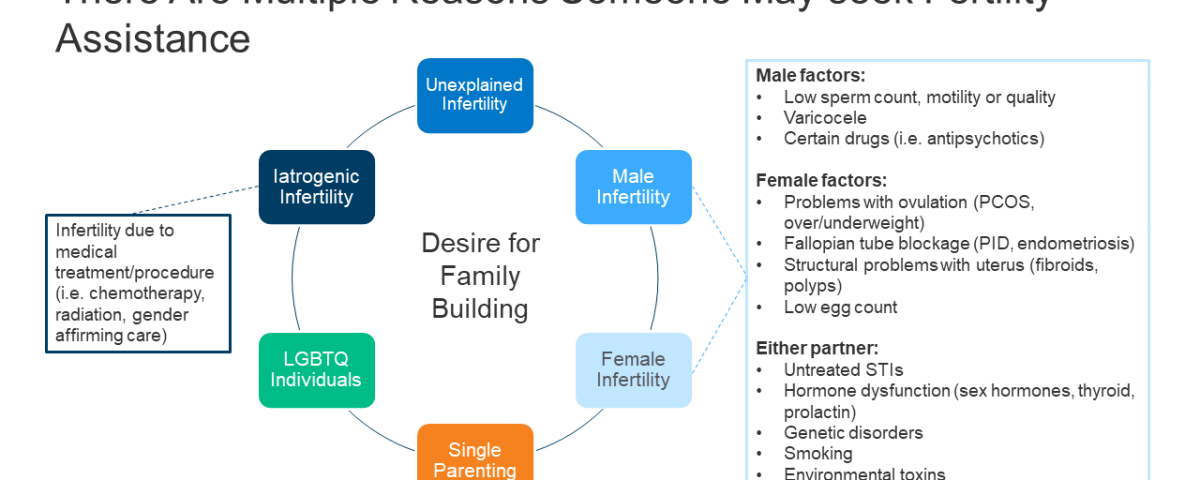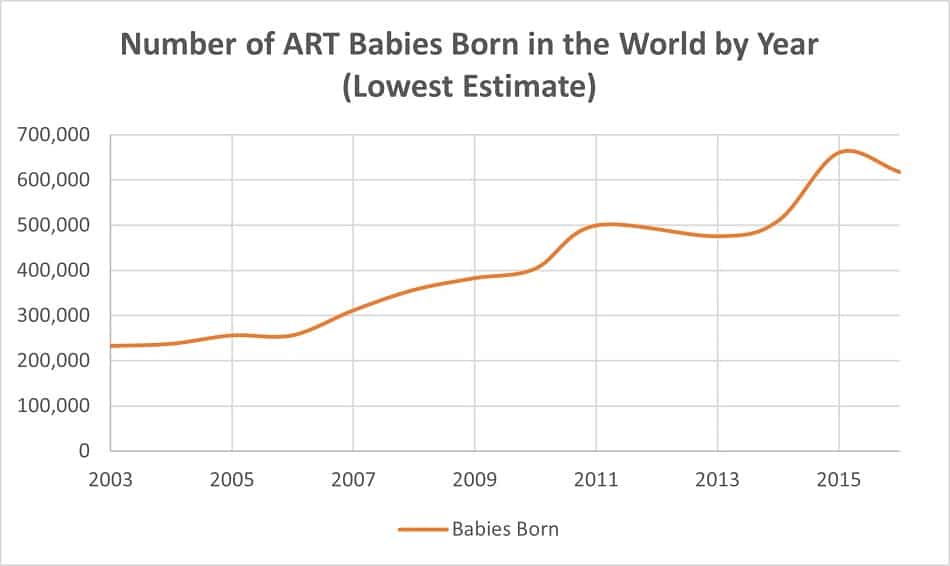
Can You Take Metformin While Undergoing IVF?
April 23, 2025
How Many Injections Are Needed for IVF Treatment?
April 23, 2025Does Cigna Cover IVF? Your Guide to Understanding Fertility Coverage
Navigating health insurance can feel like wandering through a maze, especially when it comes to something as personal and complex as fertility treatments. If you’re wondering whether Cigna covers in vitro fertilization (IVF), you’re not alone. Millions of people across the U.S. face infertility challenges, and IVF often becomes a beacon of hope. But the big question remains: will your insurance help foot the bill? Let’s dive into what Cigna offers, how coverage works, and what you need to know to make the most of your plan—plus a few insider tips you won’t find everywhere else.
What Is IVF and Why Does Coverage Matter?
IVF is a process where doctors combine an egg and sperm in a lab, then transfer the resulting embryo into the uterus. It’s a game-changer for many struggling to conceive, whether due to blocked fallopian tubes, low sperm count, or unexplained infertility. But here’s the catch: it’s expensive. A single cycle can cost between $12,000 and $20,000, not including medications, which can add another $3,000 to $5,000. For many, insurance coverage is the difference between pursuing this dream and putting it on hold.
Cigna, one of the major health insurance providers in the U.S., serves millions through employer-sponsored plans, individual policies, and marketplace options. Whether they cover IVF depends on your specific plan, state laws, and a few other factors we’ll unpack. Spoiler alert: it’s not a simple yes or no, but don’t worry—I’ve got you covered with the details.
Cigna’s General Stance on IVF Coverage
Cigna doesn’t have a blanket policy that applies to every plan. Instead, coverage varies based on what your employer or plan administrator has negotiated. Some Cigna plans include fertility treatments like IVF as a standard benefit, while others treat it as an optional add-on or exclude it entirely. This flexibility means you’ll need to dig into your policy to know for sure.
Here’s the good news: Cigna is known for being more open to covering IVF than some other big insurers, especially when it’s deemed “medically necessary.” For example, if a doctor can show that IVF is the best option due to a specific diagnosis (like endometriosis or male factor infertility), your chances of approval go up. The bad news? Even with coverage, you might still face limits, like a cap on the number of cycles or high out-of-pocket costs.
How to Check Your Cigna Plan
Don’t just guess—get the facts. Here’s a quick step-by-step guide to figure out what your Cigna plan covers:
- Log Into Your Account: Head to Cigna’s website or app and find your plan details under “Coverage” or “Benefits.”
- Look for Fertility Benefits: Search for terms like “infertility,” “IVF,” or “assisted reproductive technology” (ART).
- Call Customer Service: If it’s unclear, dial the number on your insurance card. Ask: “Does my plan cover IVF, and what are the conditions or limits?”
- Request a Summary of Benefits: This document spells out exactly what’s included and what’s not.
Pro tip: Record the date, time, and name of the person you speak with. Insurance can be tricky, and having a paper trail helps if there’s a dispute later.
State Laws and Their Impact on Cigna IVF Coverage
Where you live plays a huge role in whether Cigna covers IVF. As of April 2025, 20 states have laws mandating some level of infertility coverage, and 10 of those specifically require IVF to be included in certain plans. These “mandate states” include places like New York, New Jersey, and Illinois. If you’re in one of these states and have a Cigna plan through your employer, there’s a good chance IVF is covered—at least partially.
For example, New York’s law requires large group plans to cover up to three IVF cycles, including medications and procedures. Cigna has to comply if your plan falls under this rule. But if you’re in a non-mandate state like Florida or Texas, coverage depends entirely on your employer’s choices. Smaller companies or self-funded plans (where the employer pays claims directly) often skip fertility benefits to cut costs.
A Quick Look at Mandate vs. Non-Mandate States
| State Type | IVF Coverage Likelihood | Example States |
|---|---|---|
| Mandate States | High (if plan qualifies) | NY, NJ, IL, MA |
| Non-Mandate States | Low (depends on employer) | FL, TX, GA, AZ |
Not sure about your state? Check the National Conference of State Legislatures website for the latest updates on infertility laws. It’s a game-changer for understanding your rights.
What Does Cigna IVF Coverage Typically Include?
When Cigna does cover IVF, the benefits usually break down into a few key areas. Here’s what you might expect, based on common plans that include fertility treatment:
- Diagnostic Testing: Blood tests, ultrasounds, and semen analysis to pinpoint why you’re struggling to conceive.
- Medications: Drugs like gonadotropins to stimulate egg production or trigger ovulation.
- IVF Procedures: Egg retrieval, lab fertilization, and embryo transfer.
- Follow-Up Care: Monitoring after the transfer to ensure the embryo implants.
But there’s always a catch. Coverage might come with limits, like:
- ✔️ A maximum of 1-3 cycles (each cycle is one full IVF attempt).
- ✔️ A lifetime dollar cap (e.g., $10,000 or $25,000).
- ❌ Exclusions for extras like embryo freezing or genetic testing.
Real-life example: Sarah, a 34-year-old teacher from New Jersey, found her Cigna plan covered two IVF cycles after a $2,000 deductible. Medications were 80% covered, but she had to pay out-of-pocket for embryo storage. Her total cost? About $5,000 per cycle—steep, but way less than the full $15,000 price tag.
Gaps in Coverage: What’s Often Left Out?
Even with a solid Cigna plan, some IVF-related costs might not be covered. These gaps can sneak up on you, so here’s what to watch for:
- Embryo Freezing: Storing extra embryos for future use often isn’t included. Expect to pay $500-$1,000 per year.
- Preimplantation Genetic Testing (PGT): Screening embryos for genetic issues can cost $3,000-$6,000 and is rarely covered unless medically necessary.
- Donor Eggs or Sperm: If you need donor material, costs can skyrocket to $10,000+, and coverage is spotty.
- Surrogacy: Using a gestational carrier? Most plans, including Cigna’s, won’t touch it.
Interactive Quiz: How Much Could IVF Cost You?
Take a second to estimate your potential expenses:
- Does your Cigna plan cover IVF?
- Yes → Move to Q2.
- No → Full cost: $12,000-$20,000 per cycle.
- Are medications included?
- Yes → Add $1,000-$2,000 out-of-pocket.
- No → Add $3,000-$5,000.
- Need extras like freezing or PGT?
- Yes → Tack on $1,000-$6,000.
- No → You’re done!
Add up your answers. Surprised by the total? That’s why planning ahead is key.
How to Maximize Your Cigna IVF Benefits
If your plan covers IVF, don’t leave money on the table. Here’s how to stretch your benefits as far as they’ll go:
- Work with In-Network Providers: Cigna often requires you to use fertility clinics in their network. Out-of-network care might mean higher costs or no coverage at all.
- Appeal Denials: If Cigna says no, don’t give up. Submit a letter from your doctor explaining why IVF is necessary. One study found 25% of insurance appeals succeed with proper documentation.
- Use Flexible Spending Accounts (FSAs): Set aside pre-tax dollars to cover copays or uncovered costs. In 2025, the FSA limit is $3,200—plenty to offset meds or freezing.
- Ask About Discounts: Some clinics offer Cigna patients reduced rates or payment plans. It never hurts to negotiate.
Case in point: Mark and Lisa, a couple from Illinois, got their third IVF cycle approved after an appeal showed Lisa’s ovarian reserve was too low for other treatments. Persistence paid off—literally.
The Emotional and Financial Toll of IVF
IVF isn’t just about money—it’s an emotional rollercoaster. Studies show 40% of women undergoing IVF experience anxiety or depression, often worsened by financial stress. If Cigna covers part of the cost, it can lighten the load, but you’ll still need a game plan.
Coping Tips from Real Patients
- ✔️ Build a Support Network: Join online forums or local groups. Hearing “I’ve been there” can make a huge difference.
- ✔️ Break It Down: Focus on one step at a time—meds, retrieval, transfer—instead of the whole process.
- ❌ Don’t Bottle It Up: Talk to a friend or therapist if the pressure builds.
One mom I spoke with said, “Cigna covered two cycles, but the waiting was brutal. I started journaling to keep my sanity.” Small steps can keep you grounded.
New Research: What’s Changing in IVF Coverage?
The fertility world is evolving fast, and 2025 brings fresh insights. A recent study from the American Society for Reproductive Medicine (ASRM) found that insurance coverage for IVF boosts success rates by 15%—likely because patients can afford more cycles. Another report from FertilityIQ showed that employers offering IVF benefits jumped 20% since 2020, with companies like Google and Amazon leading the charge. Cigna’s adapting too, with some plans now testing “shared risk” programs where you get a refund if IVF fails after a set number of tries.
What’s this mean for you? If your employer’s on the fence about adding IVF coverage, these trends might tip the scales. Share the data with HR—it could spark a change.
Unique Angle: The Hidden Costs of “Partial” Coverage
Most articles gloss over this, but partial IVF coverage can be a double-edged sword. Say Cigna covers the procedure but not the meds. You’re still on the hook for thousands, and the stress of piecing together funds can derail your focus. Or maybe they cover one cycle, but your doctor recommends three. Suddenly, you’re dipping into savings or taking out loans.
Here’s a breakdown of hidden costs based on real patient experiences:
| Expense | Covered? | Out-of-Pocket Cost |
|---|---|---|
| Procedure (1 cycle) | Yes | $0-$2,000 (copay) |
| Medications | No | $3,000-$5,000 |
| Embryo Freezing | No | $500-$1,000/year |
| Travel to Clinic | No | $100-$500 |
Solution? Budget for the extras upfront. One couple I heard about saved $8,000 over a year, knowing their Cigna plan wouldn’t cover everything. It’s not fun, but it’s better than scrambling mid-cycle.
Cigna vs. Other Insurers: How Do They Stack Up?
Curious how Cigna compares? Here’s a snapshot based on industry trends and patient feedback:
- Cigna: Strong on IVF when included, but spotty on extras like freezing. Good for in-network care.
- Blue Cross Blue Shield: Varies by state, often covers more cycles in mandate states.
- United Healthcare: Broad infertility coverage, but pre-approval can be a hassle.
Cigna shines for cost-effectiveness—plans are often cheaper on the ACA marketplace—but flexibility depends on your employer. If IVF’s a must, compare all your options during open enrollment.
Poll: What’s Your Biggest IVF Worry?
Pick one and share in the comments:
- A) Cost
- B) Success rates
- C) Insurance hassles
- D) Emotional stress
Your input helps others feel less alone!
Beyond Insurance: Alternative Funding Options
If Cigna doesn’t cover IVF—or the costs still sting—don’t lose hope. Here are creative ways to fund your journey:
- Fertility Grants: Groups like BabyQuest offer up to $15,000 for IVF. Apply early—spots fill fast.
- Crowdfunding: Platforms like GoFundMe have helped families raise thousands. Share your story for max impact.
- Clinic Financing: Many offer 0% interest loans for 12-24 months. Check terms to avoid surprises.
- Tax Deductions: Medical expenses over 7.5% of your income are deductible. IVF often qualifies.
One couple raised $10,000 through a bake sale and GoFundMe, proving every little bit counts.
The Future of IVF Coverage with Cigna
Looking ahead, IVF coverage is gaining traction. Advocacy groups are pushing for federal mandates, and public support is growing—70% of Americans now favor insurance covering fertility treatments, per a 2024 poll. Cigna’s already testing pilot programs in some states, like bundling IVF with mental health support. If trends hold, we might see broader coverage by 2030.
What’s my take? Insurers like Cigna will keep expanding benefits as pressure mounts—but it’ll be gradual. Stay proactive: ask your employer about updates yearly, and don’t shy away from advocating for yourself.
Final Thoughts: Your Next Steps
So, does Cigna cover IVF? It depends on your plan, your state, and how hard you’re willing to dig. Start by checking your benefits, talking to your doctor, and exploring every angle—appeals, grants, or even switching jobs for better coverage. IVF’s a big decision, but with the right info, you can make it work.
Got a Cigna IVF story? Drop it below—I’d love to hear how it went for you. And if you’re just starting out, take it one day at a time. You’ve got this.




